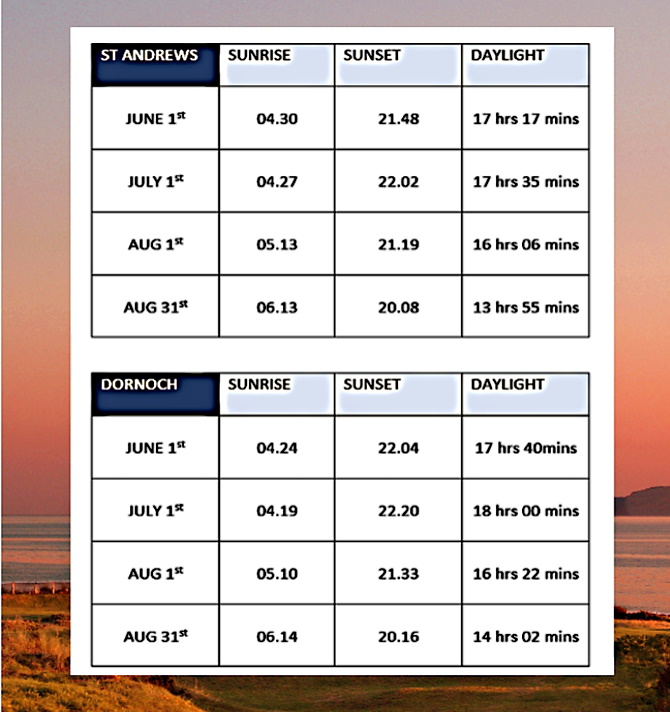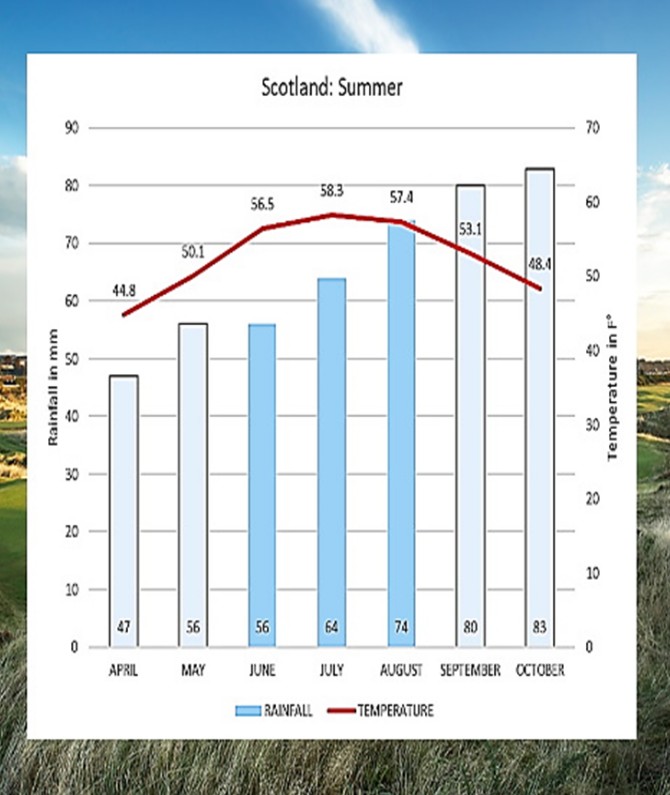
Rather than use generic countrywide data, Faraway Fairways have built our own. We’ve produced a weighted figure based on golfing destinations to reflect the typical composition of a trip, St Andrews (50%), Troon (25%) Edinburgh (15%) and Inverness (10%).
June has the most daylight of the year. July is the warmest month, but with more heat comes more moisture beginning to building up in the atmosphere. Rainfall begins to rise from June onwards into the autumn.
AVERAGE ST ANDREWS WIND-SPEED
JUNE = 9.5 MPH
JULY = 9.6 MPH
AUGUST = 10.7 MPH
Once every five years the Old Course will host the Open. This closes it from June until mid July. The 2nd or 3rd week of June is university graduation week. Although hotel prices increase, there are less golfers in town chasing tee-times. Daily strike-rate on the ballot increases by about 5%. June can be a surprisingly good month despite there usually being a lot of block-outs on Saturday’s. The Links Trust have sought to supply July times for visitors and load more ticket-holders times into the autumn. July is relatively clear as a consequence but obviously subject to higher demand. August is the wettest month of year in St Andrews, albeit the temperatures are a lot more obliging.
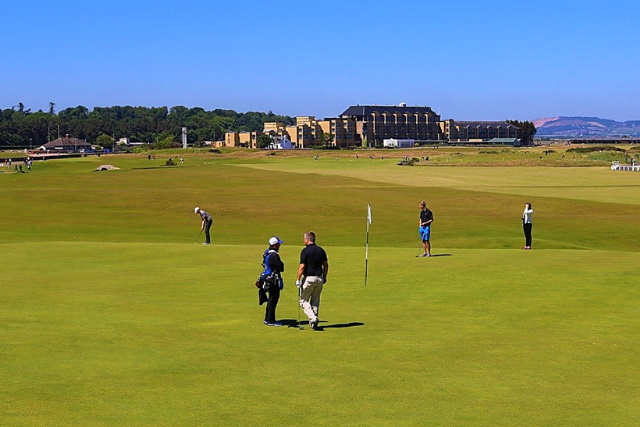
18th Green, St Andrews Old Course
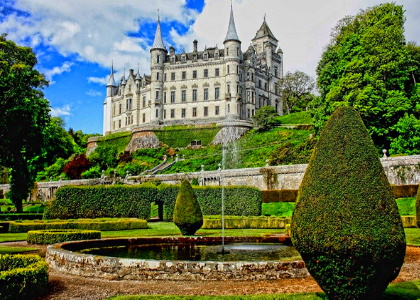

Boat of Garten
The longest day of the year typically occurs in June on or around the 20th of the month. Fitter and more ambitious ‘value-seekers’ can begin to comfortably think about adding a second course each day
The Open needn’t be the only tournament that could deny us a round somewhere. Early July also sees the traditional staging of the Scottish Open which takes some of late June. On the present rotation of venues could take-out one of Castle Stuart, Royal Aberdeen, Gullane, Dundonald, or the Renaissance Club
June is probably the best time for playing the Highlands. It experiences the most daylight and least amount of rain amongst the summer months. It’s also a good choice on the west coast too
July is the hottest month of the year and sees the school summer holidays begin. The month effectively divides in two with a peak and super-peak season beginning. All the top golf destinations are busy. It becomes more challenging to pilot clients onto the St Andrews Old course. A combination of extended daylight (06.30 first tee-times) and a sympathetic supply softens the blow.
The build up of warmer air from May onwards has usually introduced a bit more moisture into the atmosphere. July sees a surprisingly high amount of rain, but it tends to be manageable showers. It’s more a question of not being surprised rather than one of being deterred by it. If an anti-cyclone is dominant though, then a sustained spell of good weather can lock-in for weeks at a time
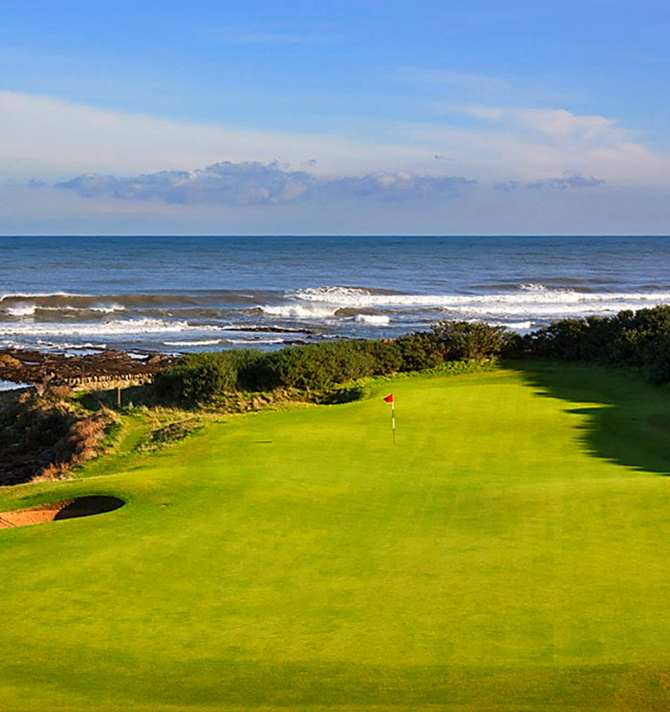
Kingsbarns 3rd
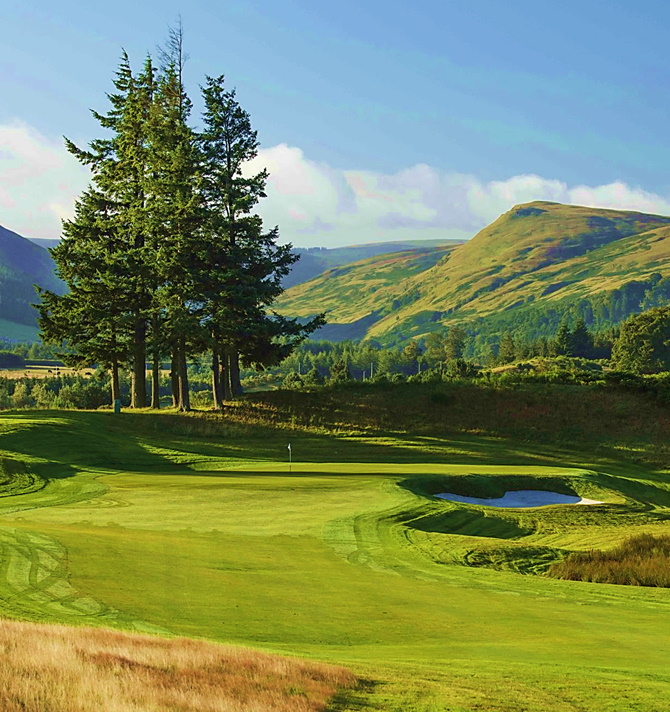
Gleneagles Ryder Cup course 1st
August performs very similarly to July.
One thing to draw to your attention however is the Edinburgh Festival which takes place throughout most of the month. Hotels in the capital fill up quickly and will usually look for at least twice the normal rate. If you’re playing the courses of east Lothian (Muirfield, North Berwick or Gullane) then this could become a consideration.
The summer is the best season for attempting the more ambitious itineraries that might involve the Highlands and Islands and remote courses such as Machrie, Machriahnish and Askernish. Car ferries to these outposts are more plentiful and sail with greater frequency since the wind is lightest and less likely to causes weather disruption.
At these northern latitudes we get extended daylight in the summer and reduced daylight in the winter. If you use the summer months judiciously, you can add what amounts to two or three days on a 7-10 day itinerary. You need to quickly get into the habit of realising that your day needn’t finish at five o’clock. If you go deeper into the evening you can easily play a second twilight round, or take-in some non-golf activity, (particularly landscape which isn’t opening time restricted). You can easily put 200 miles away in an evening in the Highlands for instance and still be back before dark
